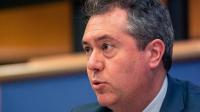Seville mayor looks beyond tourism

Mayor of Seville Juan Espadas tells Sebastian Shehadi about city’s technological prowess – especially in aerospace and greentech – and other attractions beyond the city’s booming tourism industry.
Q: Why is Seville becoming ever more attractive to tourists?
A: First of all, our identity. We are a city, a territory, with a long history and a visible, well-preserved historic heritage. This history has always been an attractive city for tourism, but we didn’t do a great promotion. In the past, our attitude was a bit more passive. So we have changed, and turned our tourism into a leverage for attraction into the city, so we can show it better. We are positioning Seville in the global market.
Over the past three years, our tourism has broken all records regarding growth. There are 3.2 million visitors annually, but they are spending more and more in Seville. Tourism seeks culture here, heritage, and we get a lot of return visitors. Culture is a driving force of the economy, and this means that Seville’s offering has managed to remove tourism’s seasonal cycle.
We are growing our business tourism, with conferences and convention tourism – such as the 2019 World Travel and Tourism Council’s Global Summit – as well as the main cultural events linked to the history of Seville. We have improved the city’s connectivity with 80 European cities by air. We are the second city in Spain regarding convention tourism, thanks to the facilities like the convention centre, which is world-class and high-capacity.
Q: What do you think makes Seville most attractive to foreign investors?
A: We are the capital city of a region of more than 8 million inhabitants, and are at the heart of a metropolitan area of 1.5 million inhabitants. We are combining our tradition and history with state-of-the-art technology and innovation. Our size is intermediate, which allows for high quality of life, especially in terms of mobility and city accessibility, and safety and security. Our geographical position makes us one of the most important capital cities of the south of Europe, and very close to north of Africa.
We have good infrastructure, high-speed trains, very good roads, and very good urban equipment and infrastructure. We have natural heritage, through Doñana National Park, which is 40 minutes’ drive from Seville.
So, Seville’s strategy is about international repositioning in order to make the city as important as Madrid and Barcelona, in terms of investment.
Our aerospace industry is not so well-known, but is an industry hub and has companies such as Airbus located here. In 2019, Seville became the European capital of space alongside Toulouse and Hamburg, the three cities in Europe that are more competitive regarding aerospace. In Seville, we have the final assembly line of military and civilian aircraft, with pieces and parts coming from all over Europe in the aerospace industry. This industry is the second biggest exporting industry in the whole of Andalusia. It’s almost as important as our olive oil exports for the food industry.
We have a scientific and technology park called the Cartuja Science and Technology Park. It was the venue of the Universal Exposition in 1992, and now is a great example of success in how we have re-used our public space. The fibre network that Spain has today is better than Germany, France and Italy’s fibre networks today. So we have a potential for growth that is actually higher for the deployment of technology companies. Additionally, the higher council for scientific research, which is the Spanish official authority for science has located here in Seville, and the city has Spain’s second highest level of scientific and technological activity, after Madrid.
Last, we have the Seville port, which is the driving force of the logistics industry, which is super powerful and growing regarding the economic emphasis in the area on transport.
Q: To what extent is Seville beyond the residual effects of Spain’s economic crisis?
A: We’re growing above 3% GDP – higher than other Spanish territories – and the crisis of the past has been left behind, except that our youth unemployment is still a problem, and our construction sector is still behind. That is why we are diversifying our economy, especially through technologies such as green and cleantech. Seville can be a benchmark capital for solar energy in Europe.

Global greenfield investment trends
Crossborder investment monitor
|
|
fDi Markets is the only online database tracking crossborder greenfield investment covering all sectors and countries worldwide. It provides real-time monitoring of investment projects, capital investment and job creation with powerful tools to track and profile companies investing overseas.
Corporate location benchmarking tool
fDi Benchmark is the only online tool to benchmark the competitiveness of countries and cities in over 50 sectors. Its comprehensive location data series covers the main cost and quality competitiveness indicators for over 300 locations around the world.
Research report
fDi Intelligence provides customised reports and data research which deliver vital business intelligence to corporations, investment promotion agencies, economic development organisations, consulting firms and research institutions.
Find out more.




